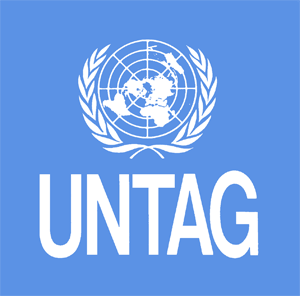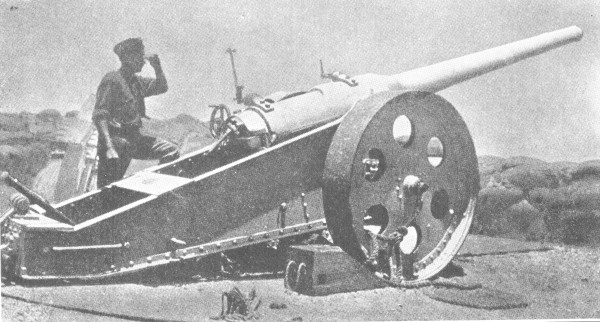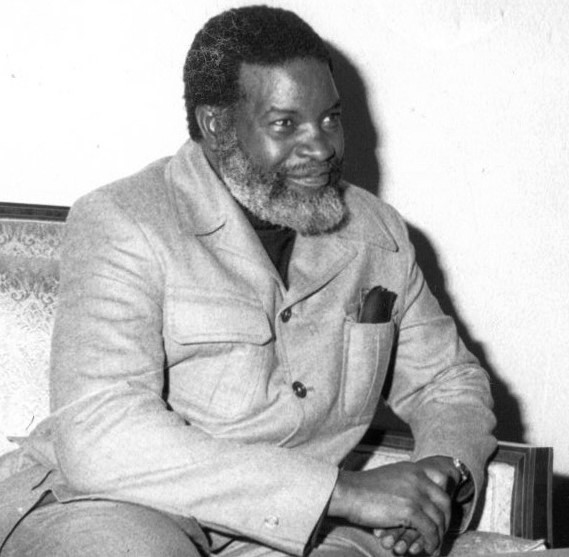|
Australian Contribution To UNTAG
The Australian Services Contingent was the Australian Army contribution to the United Nations Transition Assistance Group (UNTAG) peacekeeping mission to Namibia in 1989 and 1990. Australia sent two contingents of over 300 engineers each to assist the Special Representative of the Secretary General, Martti Ahtisaari, in overseeing free and fair elections in Namibia for a Constituent Assembly in what was the largest deployment of Australian troops since the Vietnam War. The Australian mission was widely reported as successful. Colonel John Crocker, commander of the second Australian contingent (2ASC), wrote that the November 1989 election was UNTAG's ''raison d'être'' and observed that "the Australian contingent's complete and wide-ranging support was critical to the success of that election and hence the mission – a fact that has been acknowledged at the highest level in UNTAG". Javier Pérez de Cuéllar, Secretary-General of the United Nations, wrote to Gareth Evans (Austra ... [...More Info...] [...Related Items...] OR: [Wikipedia] [Google] [Baidu] |
UNTAG Logo 1989-90 Low Resolution
The United Nations Transition Assistance Group (UNTAG) was a United Nations (UN) peacekeeping force deployed from April 1989 to March 1990 in Namibia, known at the time as South West Africa, to monitor the peace process and elections there. Namibia had been occupied by South Africa since 1915, first under a League of Nations mandate and later illegally. Since 1966, South African forces had been combating an insurgency by the People's Liberation Army of Namibia (PLAN), the military wing of the Namibian-nationalist South West African People's Organization (SWAPO). The UN Security Council passed Resolution 435 in 1978, which set out a plan for elections administered by South Africa but under UN supervision and control after a ceasefire. However, only in 1988 were the two parties able to agree to a ceasefire. As UNTAG began to deploy peacekeepers, military observers, police, and political workers, hostilities were briefly renewed on the day the transition process was supposed to be ... [...More Info...] [...Related Items...] OR: [Wikipedia] [Google] [Baidu] |
United Nations Special Committee On Decolonization
The United Nations Special Committee on the Situation with Regard to the Implementation of the Declaration on the Granting of Independence to Colonial Countries and Peoples, or the Special Committee on Decolonization (C-24), is a committee of the United Nations General Assembly that was established in 1961 and is exclusively devoted to the issue of decolonization. History When the United Nations was created, there were 750 million people living in territories that were non-self-governing. However, the Charter of the United Nations included, in Chapter XI, provisions calling for recognition of the rights of inhabitants of territories administered by its Member States. It called for these Member States to aid in the establishment of self-governance through the development of free political institutions, as well as to keep in mind the political aspirations of the peoples. The Charter also created, in Chapter XII, the international trusteeship system. This system allowed for ... [...More Info...] [...Related Items...] OR: [Wikipedia] [Google] [Baidu] |
Cuban Revolutionary Armed Forces
The Cuban Revolutionary Armed Forces ( es, Fuerzas Armadas Revolucionarias; FAR) are the military forces of Cuba. They include ground forces, naval forces, air and air defence forces, and other paramilitary bodies including the Territorial Troops Militia (''Milicias de Tropas Territoriales'' – MTT), Youth Labor Army (''Ejército Juvenil del Trabajo'' – EJT), and the Defense and Production Brigades (''Brigadas de Producción y Defensa'' – BPD), plus the Civil Defense Organization (''Defensa Civil de Cuba'' – DCC) and the National Reserves Institution (''Instituto Nacional de las Reservas Estatales'' – INRE). All these groups are subordinated to the ''Ministro de las Fuerzas Armadas Revolucionarias'' ("Ministry of the Revolutionary Armed Forces" – MINFAR). The armed forces have long been the most powerful institution in Cuba. The military manages many enterprises in key economic sectors representing about 4% of the Cuban economy. The military has also served as for ... [...More Info...] [...Related Items...] OR: [Wikipedia] [Google] [Baidu] |
Cuba
Cuba ( , ), officially the Republic of Cuba ( es, República de Cuba, links=no ), is an island country comprising the island of Cuba, as well as Isla de la Juventud and several minor archipelagos. Cuba is located where the northern Caribbean Sea, Gulf of Mexico, and Atlantic Ocean meet. Cuba is located east of the Yucatán Peninsula (Mexico), south of both the American state of Florida and the Bahamas, west of Hispaniola (Haiti/Dominican Republic), and north of both Jamaica and the Cayman Islands. Havana is the largest city and capital; other major cities include Santiago de Cuba and Camagüey. The official area of the Republic of Cuba is (without the territorial waters) but a total of 350,730 km² (135,418 sq mi) including the exclusive economic zone. Cuba is the second-most populous country in the Caribbean after Haiti, with over 11 million inhabitants. The territory that is now Cuba was inhabited by the Ciboney people from the 4th millennium BC with the Gua ... [...More Info...] [...Related Items...] OR: [Wikipedia] [Google] [Baidu] |
People's Armed Forces For The Liberation Of Angola
The People's Armed Forces of Liberation of Angola ( pt, Forças Armadas Populares de Libertação de Angola) or FAPLA was originally the armed wing of the People's Movement for the Liberation of Angola (MPLA) but later (1975–1991) became Angola's official armed forces when the MPLA took control of the government. Its major adversaries were the National Union for the Total Independence of Angola (UNITA), its armed wing, the Armed Forces of Liberation of Angola (FALA), and the South African Defence Force (SADF). The FAPLA fought the SADF and UNITA/FALA constantly from the 1970s, part of the Angolan Civil War and the South African Border War, including during Operation Savannah (1975-76), and Operation Sceptic (1980). The Battle of Cuito Cuanavale (1987-1988) was the largest land battle in Africa since the Second World War. After the Bicesse Accords in 1993, the FAPLA were transformed in the Angolan Armed Forces (''Forças Armadas de Angola'', FAA), by the integration of UN ... [...More Info...] [...Related Items...] OR: [Wikipedia] [Google] [Baidu] |
MPLA
The People's Movement for the Liberation of Angola ( pt, Movimento Popular de Libertação de Angola, Abbreviation, abbr. MPLA), for some years called the People's Movement for the Liberation of Angola – Labour Party (), is an Angolan left-wing, social democratic political party. The MPLA fought against the Portuguese army in the Angolan War of Independence from 1961 to 1974, and defeated the UNITA, National Union for the Total Independence of Angola (UNITA) and the National Liberation Front of Angola (FNLA) in the Angolan Civil War. The party has ruled Angola since the country's independence from Portugal in 1975, being the ''de facto'' government throughout the civil war and continuing to rule afterwards. Formation On 10 December 1956, in Estado Novo (Portugal), Estado Novo-ruled Portuguese Angola, the underground Angolan Communist Party (PCA) merged with the Party of the United Struggle for Africans in Angola (PLUA) to form the People's Movement for the Liberation of Angola ... [...More Info...] [...Related Items...] OR: [Wikipedia] [Google] [Baidu] |
Movimento Popular De Libertação De Angola (bandeira)
The People's Movement for the Liberation of Angola ( pt, Movimento Popular de Libertação de Angola, abbr. MPLA), for some years called the People's Movement for the Liberation of Angola – Labour Party (), is an Angolan left-wing, social democratic political party. The MPLA fought against the Portuguese army in the Angolan War of Independence from 1961 to 1974, and defeated the National Union for the Total Independence of Angola (UNITA) and the National Liberation Front of Angola (FNLA) in the Angolan Civil War. The party has ruled Angola since the country's independence from Portugal in 1975, being the ''de facto'' government throughout the civil war and continuing to rule afterwards. Formation On 10 December 1956, in Estado Novo-ruled Portuguese Angola, the underground Angolan Communist Party (PCA) merged with the Party of the United Struggle for Africans in Angola (PLUA) to form the People's Movement for the Liberation of Angola, with Viriato da Cruz, the president of ... [...More Info...] [...Related Items...] OR: [Wikipedia] [Google] [Baidu] |
People's Liberation Army Of Namibia
The People's Liberation Army of Namibia (PLAN) was the military wing of the South West Africa People's Organisation (SWAPO). It fought against the South African Defence Force (SADF) and South West African Territorial Force (SWATF) during the South African Border War. Throughout its history, PLAN had both irregular insurgent and semi-conventional units, as well as an extensive recruitment network in rural South West Africa (Namibia). During the war most of its domestic activities consisted of mine warfare and acts of sabotage. PLAN initially lacked any standing units, and the bulk of operations were carried out by political exiles who spent cyclical periods residing in refugee camps in neighbouring states before launching raids inside South West Africa itself. By the end of the war, PLAN had 32,000 militants under arms, including three battalions of semi-conventional troops equipped with heavy weapons. PLAN launched its largest and final offensive between late April and early Marc ... [...More Info...] [...Related Items...] OR: [Wikipedia] [Google] [Baidu] |
South-West Africa People's Organization
The South West Africa People's Organisation (, SWAPO; af, Suidwes-Afrikaanse Volks Organisasie, SWAVO; german: Südwestafrikanische Volksorganisation, SWAVO), officially known as the SWAPO Party of Namibia, is a political party and former independence movement in Namibia. Founded in 1960, it has been the governing party in Namibia since the country achieved independence in 1990. The party continues to be dominated in number and influence by the Ovambo ethnic group. SWAPO held a two-thirds majority in parliament from 1994 to 2019. In the general election held in November 2019, the party won 65.5% of the popular vote and 63 out of the 104 seats in the National Assembly. It also holds 28 out of the 42 seats in the National Council. As of November 2017, Namibian President Hage Geingob has been the president of SWAPO after being elected to the position at the party's electoral congress. History Background and foundation German South West Africa was established in 1884. Aft ... [...More Info...] [...Related Items...] OR: [Wikipedia] [Google] [Baidu] |
Angola
, national_anthem = "Angola Avante"() , image_map = , map_caption = , capital = Luanda , religion = , religion_year = 2020 , religion_ref = , coordinates = , largest_city = capital , official_languages = Portuguese , languages2_type = National languages , languages2 = , ethnic_groups = , ethnic_groups_ref = , ethnic_groups_year = 2000 , demonym = , government_type = Unitary dominant-party presidential republic , leader_title1 = President , leader_name1 = João Lourenço , leader_title2 = Vice President , leader_name2 = Esperança da CostaInvestidura do Pre ... [...More Info...] [...Related Items...] OR: [Wikipedia] [Google] [Baidu] |
Namibian War Of Independence
The South African Border War, also known as the Namibian War of Independence, and sometimes denoted in South Africa as the Angolan Bush War, was a largely asymmetric conflict that occurred in Namibia (then South West Africa), Zambia, and Angola from 26 August 1966 to 21 March 1990. It was fought between the South African Defence Force (SADF) and the People's Liberation Army of Namibia (PLAN), an armed wing of the South West African People's Organisation (SWAPO). The South African Border War resulted in some of the largest battles on the African continent since World War II and was closely intertwined with the Angolan Civil War. Following several years of unsuccessful petitioning through the United Nations and the International Court of Justice for Namibian independence from South Africa, SWAPO formed the PLAN in 1962 with material assistance from the Soviet Union, China, and sympathetic African states such as Tanzania, Ghana, and Algeria. Fighting broke out between PLAN and th ... [...More Info...] [...Related Items...] OR: [Wikipedia] [Google] [Baidu] |


